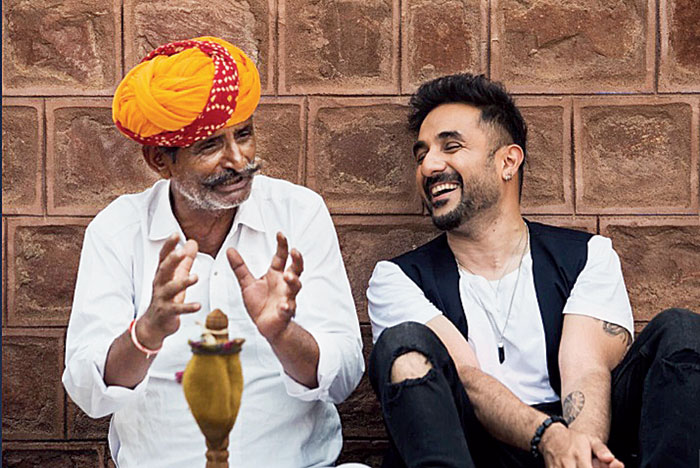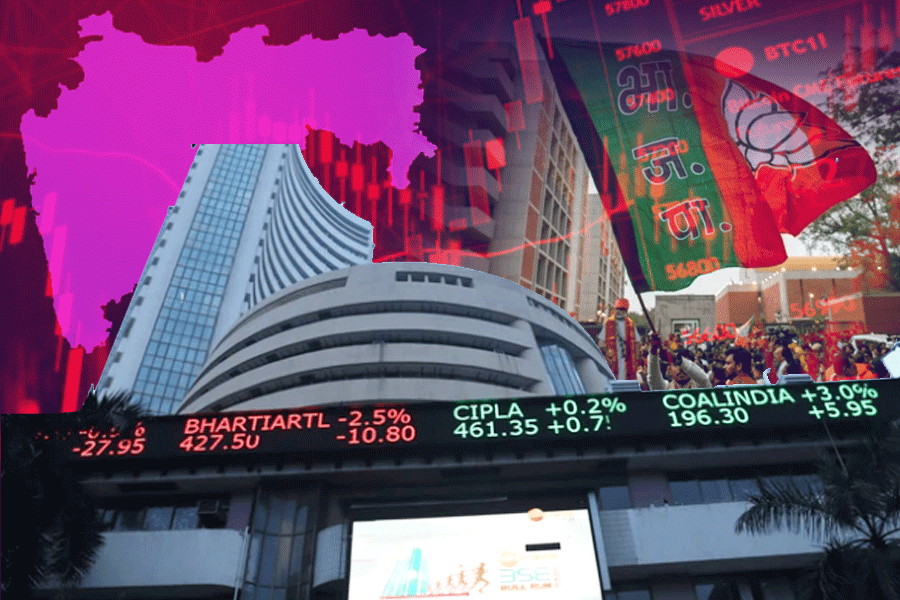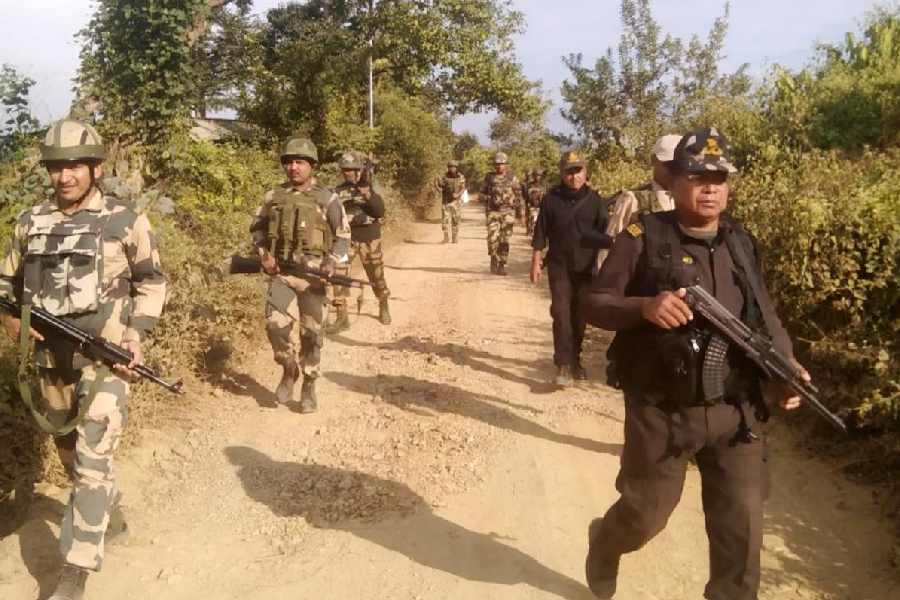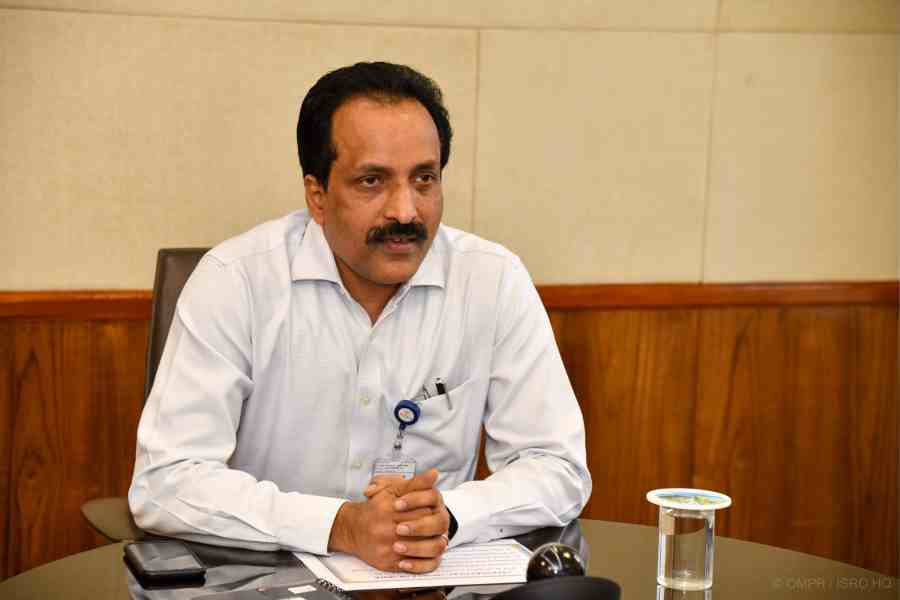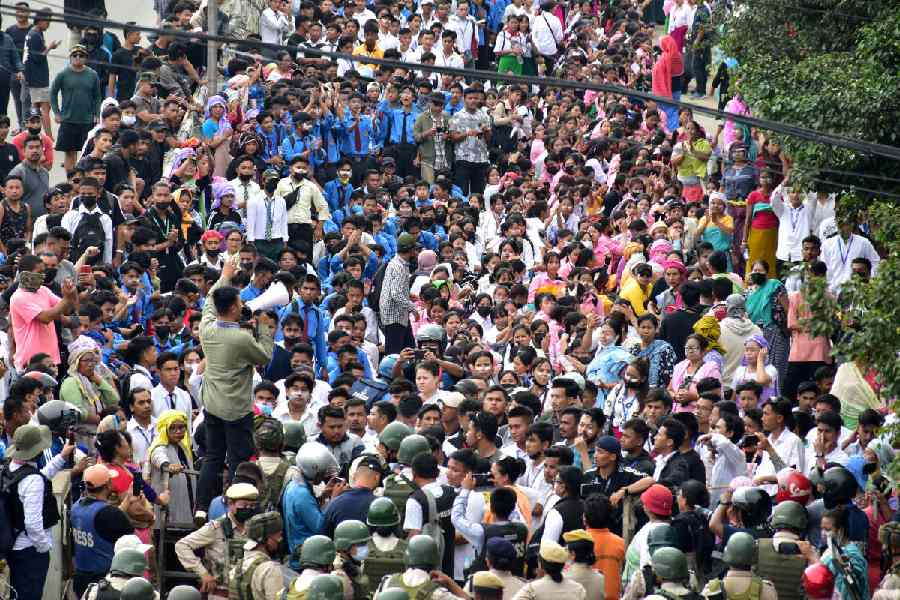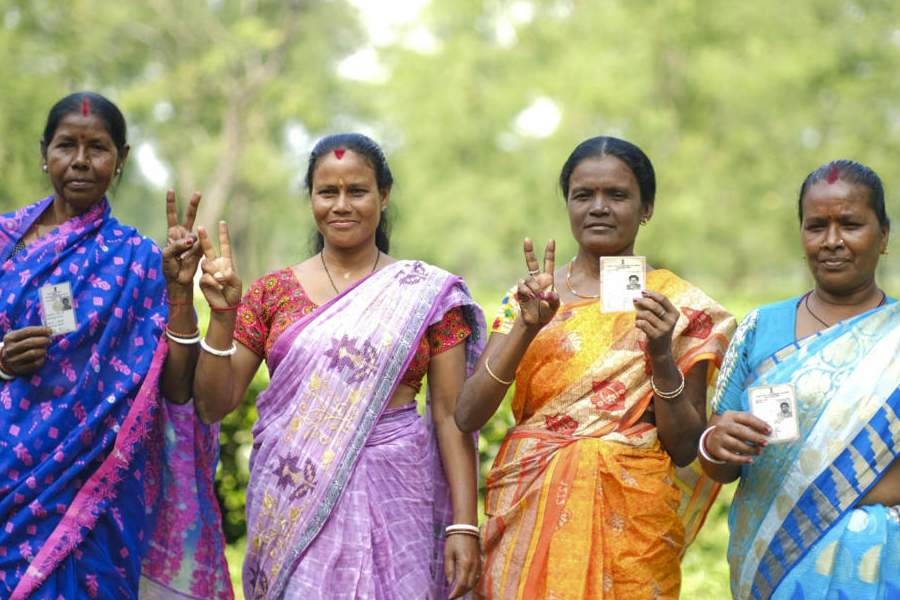Vir Das marries his love for travel and comedy in Amazon Prime Videos’s latest Indian offering Jestination Unknown. The show follows the actor-comedian and his friends through Indian cities like Jodhpur, Patiala, Lucknow, Kumarakom, Leh and Mysore as they discover India’s comedy heritage and find out what makes us laugh. The Telegraph caught up with Vir recently at the JW Marriott in Mumbai’s Juhu to know more about the show.
Where did the idea for Jestination Unknown come from?
I travel too much but don’t get to take my friends along with me enough. So, I just wanted to do a travel show where I get to hang out with other comics and have fun. I feel when comics travel together, we look at things with a different lens. We usually fly in and out of a city in a day and never get a chance to really experience it. We land at the airport and on the journey from the airport to the hotel, we look around viciously. You quickly jot down some local jokes for the first four minutes of your set. And the jokes are never really that good because you haven’t experienced the city. At the same time, comics think of slightly different, stupid things when they’re actually experiencing a city.
The show is simple — three comics go to a city for 72 hours and in that time they experience the city, eat and try everything, meet people and try and find what they find funny. We shoot silly sketches everywhere we go, then find a venue, set up a show and market it and write some local jokes. It’s more of a travel sketch, an experiential show with some stand-up thrown in. Just for context, we went to Mehrangarh Fort (in Rajasthan), that’s allegedly impenetrable. Normally, a travel show would just talk about the features of the fort, but we shot a sketch of the arrival of the British at Mehrangarh.
In Mysore, we ate Mysore pak and then shot a sketch about how it was invented in a palace. It is all unscripted, on-the-fly sketches and stand-up. What’s most interesting about the show is not all of it works because it’s all so fresh — you’ve written these jokes an hour ago and you’re putting them out. Or the sketch you’ve written in 20 minutes will either be loose or it’ll be great. But that’s what’s exhilarating to me about being a comic.
What made you pick these six destinations?
The first episode was in Lucknow, because that’s where Indian stand-up comedy began with hasya kavis and shayari. Every country has their own hybrid form of stand-up comedy, and for us it’s poetry. That’s where it all began for us, so that’s why Lucknow. Jodhpur was about royalty and comedy. The big goal in comedy is always to punch up rather than down, and the behrupiyas in Rajasthani courts were court jesters who would punch up at the king, make fun of him. Mysore is a city that values originality, there’s Mysore pak, Mysore dosa, Mysore silk. The mission there was to write a Mysore joke. Leh was chosen because it’s on the border, and the border is always thrown in the face of people who do comedy in this country — ‘Border pe log khade hai.... I always thought that even those people at the border want a laugh, so let’s go perform for them and see what happens.
We initially went to Kumarakom because it’s the most chilled-out and educated crowd in India, but then the Kerala floods happened. So, we pivoted the episode to becoming the relationship between tragedy and comedy... how soon can you laugh after a tragedy. Finally, Patiala because that’s where you have the funniest people in India. At the same time, you piss off a Punjabi and you’re in trouble. Amritsar and Chandigarh are like these glamorous cities of Punjab, while Patiala is like an underdog.
And why these comics?
So, the show has Shruti Seth, Anu Menon, Suresh Menon, Amogh Ranadive, Rohini Ramanathan, Raj Sharma, Manan Desai, Amit Tandon and Ashwin Mushran. I love all of these people and have known them for over a decade. It was important for me to have chemistry with the people I was working with. Also, I didn’t want everyone to be a stand-up comic — I wanted actors as well. A fair amount of the show is acting and sketches. In every episode, I travel with two other people.
Were there things about these destinations that surprised you?
Every place had a fair amount of surprises. I didn’t know, for example, that Punjab had their own stand-up comedy form called bhand, where two guys roast each other and beat each other with leather strips. We went to a village 50km outside Patiala and I did bhand with a guy under a tree. He’s called Balwinder Bullet and is one of the best bhand artistes in Punjab. I didn’t know that, just as I didn’t know that Mysore made the voting ink that’s used. Nobody’s ever shot a legit ad for toddy, so we tried to do that in Kerala. In Leh, we arrived at a place where you can look in different directions at China, Tibet and India. So, we did a sketch with some jokes for Chinese people, some for Tibetans and some for Indians.
When The Telegraph spoke to you last December you spoke about focusing on acting. How’s that going?
It’s going great. I just wrapped a season of Whiskey Cavalier, Hasmukh is done and will be out soon. I’ve done a feature which is a Weirdass production. It’s a madcap Austin Powers kind of high-concept comedy for India. So, not much time to tour again. From December to now, I’ve just been shooting. Now, I leave for a world tour from November 15 where I’m going to 36 countries.
Whiskey Cavalier had decent reviews but got cancelled after a season. What was your biggest learning from having worked on that show?
That you have to create flawed Indian characters. As Indians, we’re always positioned as these characters who have their shit together and have no conflict in life. We play very likable characters in the West, the kinds who pay their bills and taxes on time. I got to play this man though, who was bad with people, didn’t know how to talk to human beings, had a violent history and liked suits. And I feel when you do that, you suddenly cater to a billion people who can relate to it. We smoke, we drink, we have sex, we do all of these things. We have to create more of these characters that are realistic to an Indian psyche as opposed to the western depictions of us.

